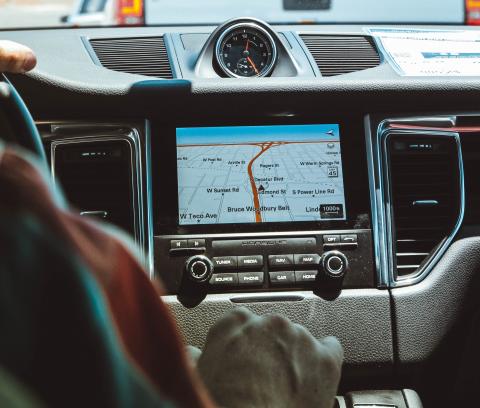Telematics - The True Future of the Auto Industry

Telematics have evolved since the very first automotive GPS system was introduced in 1990, and we’ve come a long way from basic OnStar. Theories of humans being tracked and recorded is becoming less sci-fi and more the norm. Many vehicles now come with built-in GPS, vehicle positioning assistance and more. Some automakers are now giving the option to control your vehicle from your phone. Yes, there’s an app for that.
For example, Volkswagen's 2020 models come equipped with their Car-Net telematics system. From the app you can use remote start and stop, remote lock and unlock, remote honk, remote light flashing and view various “status” features. You can make sure your doors and windows are closed, view where your vehicle is parked, check the fuel level, and more. This can come in handy. We’ve all come out of the grocery store and forgotten where we’ve parked. You can flash the lights and honk the horn from your phone to find your vehicle.
New telematics technology can also put limits on the vehicle while your teen is driving (or your husband if you want to play an innocent joke). Parents can program a curfew alert, valet alert, speed alert, and boundary alert when the car is being driven by others.
The app will also remind you of more expected things like maintenance due or if something is wrong with your vehicle. Lock yourself out? Hit the unlock button in the app.
Telematics isn’t just for practicality though. It’s also to create an ideal user experiences. Automakers are now tracking in-car entertainment to improve vehicle design and personalize the driving experience. Sure you may be able to program your seat position by driver now, but what if the radio presets change depending on who’s driving. Maybe if there’s a kid in the back seat, the volume is automatically turned down. Personalization of everything is becoming increasingly important, why should a vehicle be any different?
It’s estimated by 2025, there will be 116 million cars in the US connected via telematics. The amount of data being uploaded to the cloud is astronomical – 25 gigabytes per vehicle per day. This information will be used by automakers to make cars better and create better experiences, but will it be sold? Will it be used for advertising? Probably. OEMs stand to make a lot of money, internally and externally, on the data collected from your car. Who else would have access to this information?
Feeling a little “1985”? Don’t get too worried yet. Most of this data is unusable at the point. There’s too much information for traditional platforms to even sort through and analyze the amount of data collected. Computing systems crash or slow to a crawl when trying to understand it.
Data scientists are scurrying to build some sort of machine learning that can handle the data. And there will still be a human element needed to actually interpret what the computers spit out. The best minds are on it, but it may take some time.
Eventually (and currently) the telematics technology will be used for autonomous vehicles. For now, all we know is that this telematics is the future of the auto industry along with its friend’s electric and self-driving cars. These technologies will transform the auto industry as we know it over the next 10-20 years. Should be an interesting ride.






